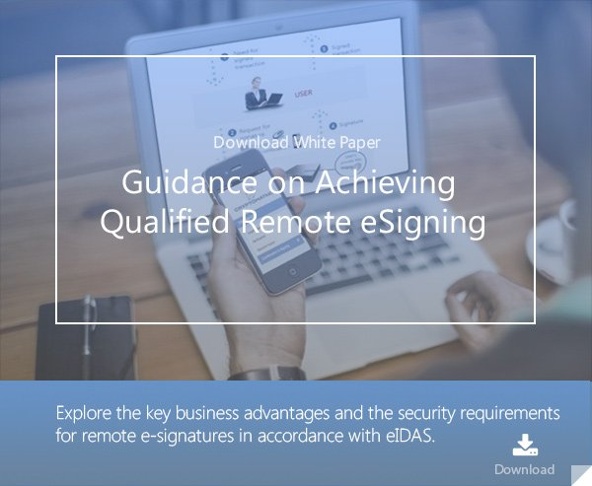3 min read
Leading the Digital Change, Part 2 – Turning eIDs into universal tools
 Gaurav Sharma (guest)
:
13. August 2021
Gaurav Sharma (guest)
:
13. August 2021

In our previous article on eID schemes in Nordic countries, we looked at some data showcasing the remarkable adoption and engagement rates for such schemes. A robust electronic identification and signature mechanism provides the foundation for building digital service delivery platforms.
Digital identification schemes are nothing new. But in the Nordic countries, they have assumed a ubiquitous form and become indispensable digital services tools clearly. Their success is a case study for larger, pan-European eID schemes like eIDAS. But what makes the Nordic initiatives so successful?
One stop shop
Considering the financial industry situation, onboarding a new customer can be a very laborious process for a bank and often the customer. ISA (Identity, Signature, Address) documents have to be collected; contracts have to be signed; due diligence has to be performed, the customer name has to be run against fraud databases and other blacklists, sanctioned country linkages have to be performed, and so on. The process can take a long while, be a significant cost center for the bank, and even cost them a few customers. In the UK, for example, as many as 40% of potential retail customers give up somewhere along the process of opening a new account!
This is where schemes like Norway’s BankID shine. It allows potential customers to provide all the necessary information to the bank by sharing their BankID (the national eID scheme). It also allows users to sign and enter into agreements without needing to sign any physical pieces of paper. And while the name BankID suggests an obvious link to financial services, the system can also be used for other services like insurance, age verification, student housing, etc. Other such schemes exist elsewhere. However, their utility is limited in what services you can avail of using those schemes. Being a one-stop shop for all your eID needs is a plus.
Speedy delivery and service quality
Estimates suggest that using BankID reduced the time for processing university housing applications from 10-14 days to 1-3 days in Norway. Similar improvements have been seen across other services, such as opening a bank account. After using the service, more and more people are now willing to transact digitally and even spend large amounts of money online. More than anything, it’s a testament to user's trust in the system based on their past experiences. The eIDAS initiative contains similar elements which enhance the overall user experience and allows customers to use the service in a manner that best suits their preferences.
Security
Most customers cite security as one of the biggest concerns when transacting digitally. eID schemes in the Nordics have greatly addressed this concern, with as many as 75% of users in Norway indicating that they would be willing to pay for the service based on its convenience and sense of security. It’s not surprising then that security is one of the key elements of directives like eIDAS.
In the final Part 3 of our series on the success of electronic IDs and eSignatures in the Nordic countries, we look at how the systems came into being with a unique collaborative approach between private and public entities. It's a model of how people with similar goals can work together to achieve greater success.
References and Further Reading
- Leading the Digital Change – eID and eSignatures in Scandinavia, Part 1 (2018), by Gaurav Sharma
- Leading the Digital Change, Part 2 – Turning eIDs into universal tools (2018), by Gaurav Sharma
- Leading the Digital Change, Part 3 – Successful Collaborations (2018), by Gaurav Sharma
- REGULATION (EU) No 1316/2013 establishing the Connecting Europe Facility, amending Regulation (EU) No 913/2010 and repealing Regulations (EC) No 680/2007 and (EC) No 67/2010(12/2013), by the European Parliament and the European Council
- Selected articles on Authentication (2014-today), by Heather Walker, Luis Balbas, Guillaume Forget, Jan Kjaersgaard, Dawn M. Turner and more
- Selected articles on Electronic Signing and Digital Signatures (2014-today), by Ashiq JA, Gaurav Sharma, Guillaume Forget, Jan Kjaersgaard , Peter Landrock, Torben Pedersen, Dawn M. Turner, and more
- The European Interoperability Framework - Implementation Strategy (2017), by the European Commission
- Proposal for a DIRECTIVE OF THE EUROPEAN PARLIAMENT AND OF THE COUNCIL amending Directive (EU) 2015/849 on the prevention of the use of the financial system for the purposes of money laundering or terrorist financing (2016), by the European Commission
- REGULATION (EU) 2016/679 on the protection of natural persons with regard to the processing of personal data and on the free movement of such data, and repealing Directive 95/46/EC (General Data Protection Regulation) (2016), by the European Parliament and the European Council
-
Proposal for a REGULATION concerning the respect for private life and the protection of personal data in electronic communications and repealing Directive 2002/58/EC (Regulation on Privacy and Electronic Communications), (2017), by the European Parliament and the European Council
- Revised Directive 2015/2366 on Payment Services (commonly known as PSD2) (2015), by the European Parliament and the Council of the European Union
- REGULATION (EU) No 910/2014 on electronic identification and trust services for electronic transactions in the internal market and repealing Directive 1999/93/EC (2014) by the European Parliament and the European Commission
-
DIRECTIVE 2013/37/EU amending Directive 2003/98/EC on the re-use of public sector information (2013) by the European Parliament and the Council
Image: tiny, grumpy soliders ..., courtesy of Kate Russel, Flickr (CC BY 2.0)
